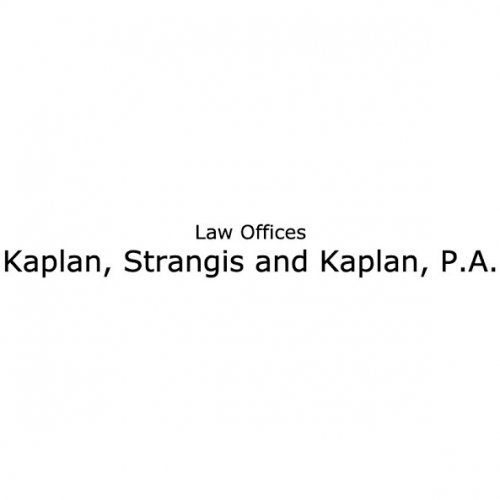Best Restructuring & Insolvency Lawyers in Minnesota
Share your needs with us, get contacted by law firms.
Free. Takes 2 min.
Or refine your search by selecting a city:
List of the best lawyers in Minnesota, United States
About Restructuring & Insolvency Law in Minnesota, United States
Restructuring and insolvency law in Minnesota addresses the financial distress of individuals or businesses that are unable to meet their debt obligations. This area of law provides mechanisms for both debtors and creditors, including formal bankruptcy proceedings, out-of-court workouts, liquidations, and reorganizations. In Minnesota, these legal processes are governed by federal bankruptcy laws, especially the Bankruptcy Code, as well as state-specific statutes that address issues like creditor rights, assignment for the benefit of creditors, and state court receiverships. The goal is to provide fair and orderly solutions, whether that means helping a business reorganize its debts and continue operations or efficiently distributing assets among creditors in the event of liquidation.
Why You May Need a Lawyer
Legal counsel is crucial if you find yourself or your business facing financial challenges. A restructuring and insolvency lawyer can help clarify your options, protect your rights, and guide you through the complex legal procedures involved. Common situations requiring legal help include:
- Personal or business insolvency
- Facing foreclosure or repossession of property
- Needing to explore bankruptcy options such as Chapter 7, 11, or 13
- Negotiating with creditors to restructure debt
- Being sued by creditors or facing collection actions
- Protecting company assets during financial distress
- Acting as a creditor seeking to maximize recovery in a bankruptcy
- Understanding the implications of insolvency on contracts and obligations
A lawyer can analyze your specific circumstances, help develop a comprehensive legal strategy, and navigate both federal and state procedures to achieve the best possible outcome.
Local Laws Overview
Restructuring and insolvency in Minnesota are influenced by both federal and state legal frameworks. The United States Bankruptcy Code is the primary federal law overseeing most bankruptcy proceedings, including Chapters 7, 11, and 13. Minnesota also has state-specific statutes such as the Minnesota Assignment for the Benefit of Creditors Act, receivership laws, and rules regarding debt collection and exemptions.
Key aspects include:
- Minnesota exemptions: These determine which personal assets you can keep during bankruptcy, such as equity in a home or vehicle, some retirement accounts, and certain personal belongings.
- Assignment for the Benefit of Creditors: This state law alternative allows a debtor to transfer assets to a third party (assignee) who liquidates them to pay creditors, providing an alternative to formal bankruptcy.
- Receiverships: Minnesota courts may appoint a receiver to manage or liquidate a business in distress, providing creditor oversight and safeguarding assets.
- Creditor rights: Minnesota laws protect creditor claims and outline the procedures for enforcing judgments, liens, and collections.
- Consumer protections: Various state rules restrict unfair debt collection practices, providing important rights and remedies for individuals facing collection actions.
Frequently Asked Questions
What is the difference between restructuring and bankruptcy?
Restructuring involves negotiating new terms with creditors or reorganizing financial affairs, often without court involvement. Bankruptcy is a formal legal process, handled in federal court, that can result in debt discharge or reorganization under court supervision.
Do I file for bankruptcy in federal or state court in Minnesota?
Bankruptcy cases are filed in federal bankruptcy court. Minnesota has two bankruptcy court divisions covering the entire state.
Are there alternatives to bankruptcy in Minnesota?
Yes. Alternatives include out-of-court workouts, assignment for the benefit of creditors, and negotiated debt settlements that may avoid the need for formal bankruptcy.
What assets can I keep if I file bankruptcy in Minnesota?
Minnesota allows you to choose between federal and state exemption lists in most bankruptcy cases. Commonly protected assets include some home equity, vehicles, retirement accounts, and personal property, subject to certain limits.
Can creditors continue to harass me after I file for bankruptcy?
No. Once you file for bankruptcy, an automatic stay goes into effect. This court order stops most collection efforts during your case.
What is a Minnesota receivership?
A receivership is a process where the state court appoints a neutral third party (receiver) to manage or liquidate the assets of a business or property in financial distress for the benefit of creditors and other stakeholders.
How does assignment for the benefit of creditors work in Minnesota?
This state law alternative allows a business to voluntarily transfer its assets to a third-party assignee, who then liquidates the assets and distributes proceeds to creditors without a formal bankruptcy filing.
Can businesses reorganize under Minnesota law without bankruptcy?
Yes. Businesses can negotiate directly with creditors, pursue out-of-court debt restructuring, or utilize state receivership or assignment procedures as alternatives to bankruptcy.
Should I hire an attorney to help with bankruptcy or restructuring in Minnesota?
Yes. An experienced attorney will ensure you understand your rights, make informed decisions, comply with legal requirements, and avoid costly mistakes in a highly technical area of law.
How is insolvency different from bankruptcy?
Insolvency refers to the financial state of being unable to pay debts as they come due. Bankruptcy is the legal process used to address insolvency under court supervision.
Additional Resources
If you need more information or assistance, the following resources may be helpful:
- Minnesota Bankruptcy Court: Provides forms, filing information, and guidance for individuals and businesses.
- Minnesota State Bar Association: Offers lawyer referral services and resources on bankruptcy and debt law.
- Office of the Minnesota Attorney General: Offers publications and help regarding debt collection, consumer protections, and legal rights.
- Legal Aid Organizations: Minnesota Legal Aid and Volunteer Lawyers Network can provide assistance for those who qualify financially.
- U.S. Trustee Program: Monitors the administration of bankruptcy cases and provides oversight.
Next Steps
If you are facing financial distress, it is important to seek legal advice as soon as possible. Delays can limit your options and make your situation worse. Here are the steps you can take:
- Assess your financial situation and gather relevant documents, such as bills, loan agreements, and correspondence from creditors.
- Consult with a lawyer who specializes in restructuring and insolvency law in Minnesota.
- Explore all available options, including out-of-court settlements, formal bankruptcy, or alternative state law remedies.
- Stay organized and follow your lawyer’s advice to ensure your interests are protected throughout the process.
- Contact local resources, such as legal aid or the Minnesota State Bar Association, if you need help finding an attorney.
Remember, timely legal assistance can help you regain control over your financial future and protect your rights under Minnesota and federal law.
Lawzana helps you find the best lawyers and law firms in Minnesota through a curated and pre-screened list of qualified legal professionals. Our platform offers rankings and detailed profiles of attorneys and law firms, allowing you to compare based on practice areas, including Restructuring & Insolvency, experience, and client feedback.
Each profile includes a description of the firm's areas of practice, client reviews, team members and partners, year of establishment, spoken languages, office locations, contact information, social media presence, and any published articles or resources. Most firms on our platform speak English and are experienced in both local and international legal matters.
Get a quote from top-rated law firms in Minnesota, United States — quickly, securely, and without unnecessary hassle.
Disclaimer:
The information provided on this page is for general informational purposes only and does not constitute legal advice. While we strive to ensure the accuracy and relevance of the content, legal information may change over time, and interpretations of the law can vary. You should always consult with a qualified legal professional for advice specific to your situation.
We disclaim all liability for actions taken or not taken based on the content of this page. If you believe any information is incorrect or outdated, please contact us, and we will review and update it where appropriate.
Browse restructuring & insolvency law firms by city in Minnesota
Refine your search by selecting a city.
















